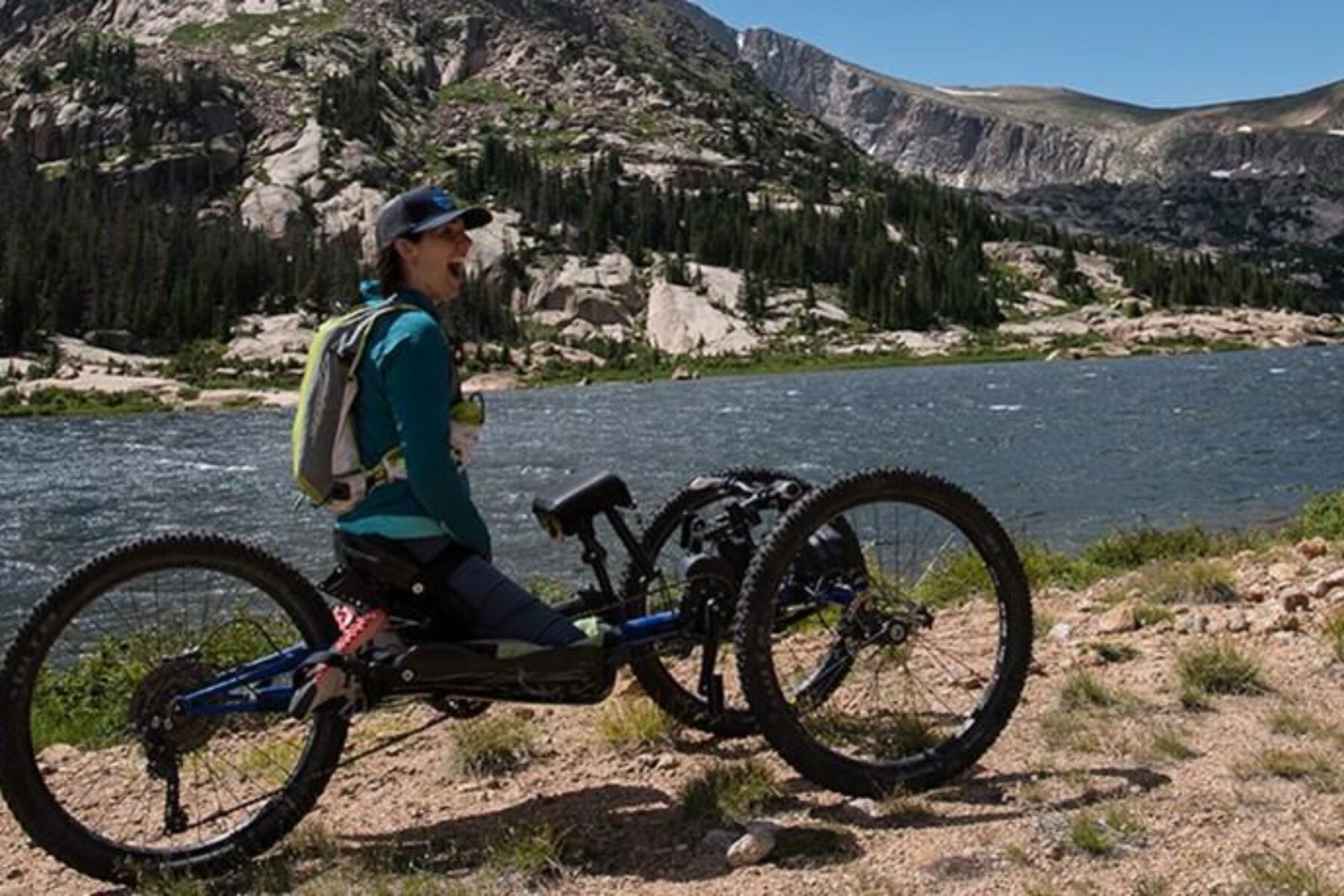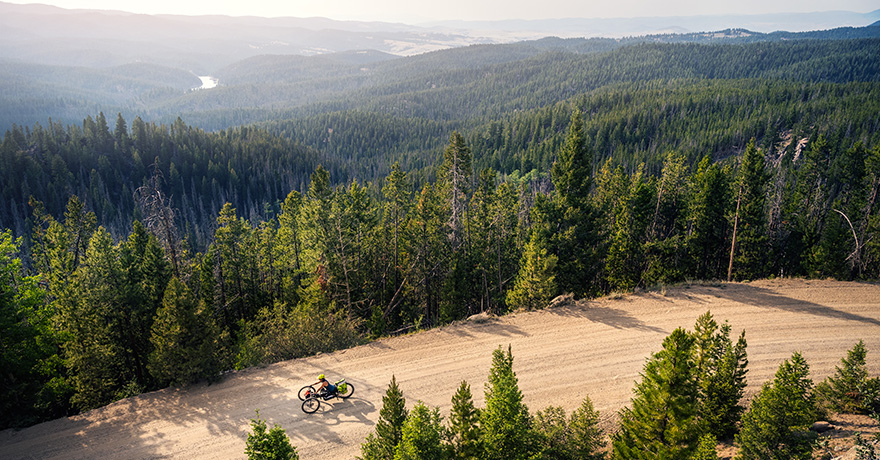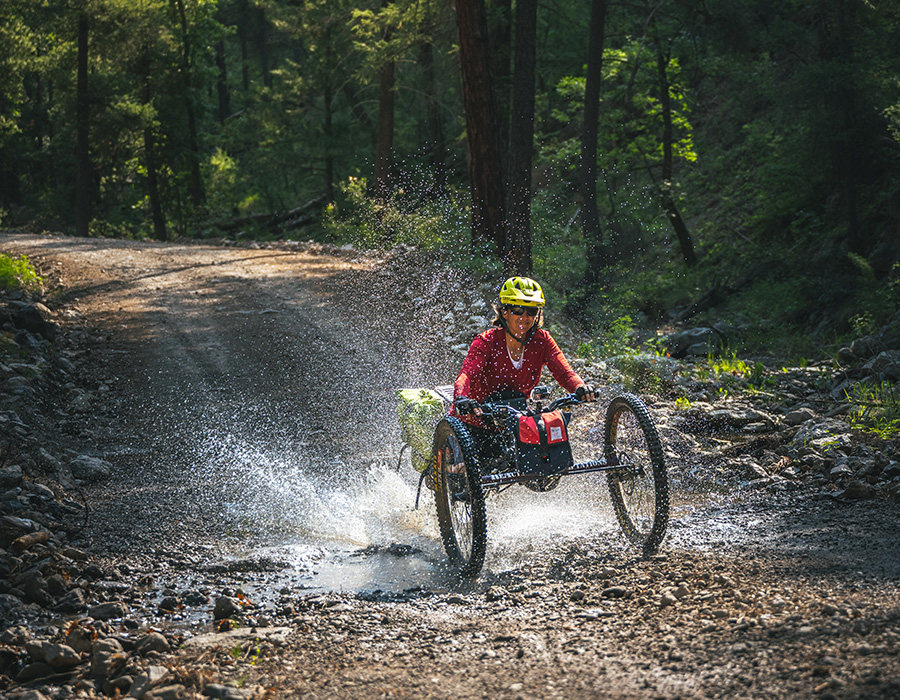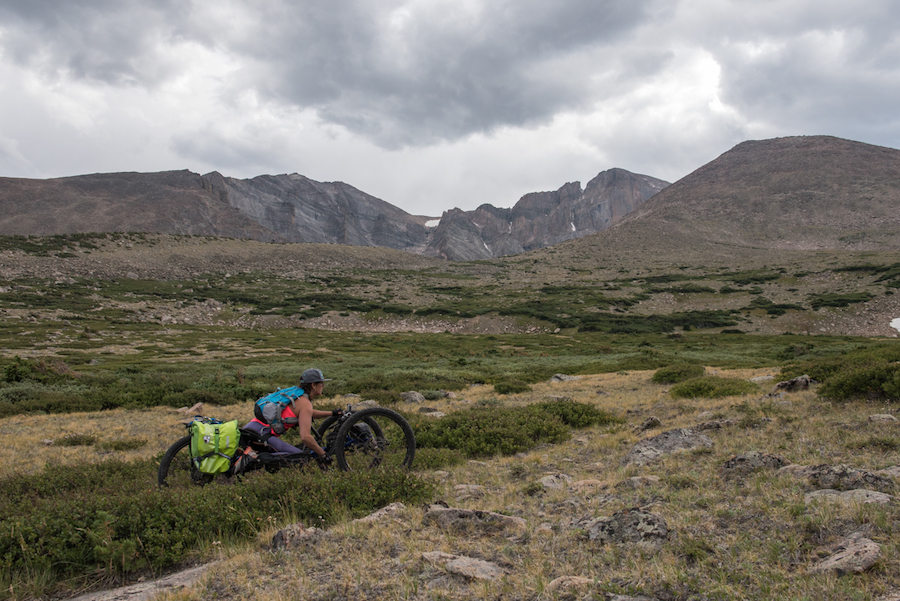Trail Moments | Adventure for All: Advocating for Accessible Outdoor Spaces

What’s next after venturing 2,500 miles on the Continental Divide Trail in the central United States? If you’re adventurer extraordinaire Quinn Brett, you continue that journey into the wilderness of the Canadian Rockies on an epic 600-mile route that extends north of the U.S.-Canada border between Alberta and British Columbia, crisscrossing the divide more than 30 times.
“The whole thing was pretty awesome—the amount of terrain you cover and all the experiences,” enthused Colorado resident Brett, who made the rugged trek in the summer of 2022 using a three-wheeled, offroad handcycle.
“People with disabilities also like a spectrum of experiences and—especially with all this new technology—are capable of a wide variety.”
Accessible Outdoor Spaces
Being outdoors has always been part of Brett’s life. After a fall during a climb of El Capitan in Yosemite National Park five years ago that left her paralyzed from the waist down, she looked for ways to continue active pursuits. A passionate trail user, she hopes to help shift the perception of what “accessible” means for outdoor recreation.
“When we say ‘accessibility and trails,’ people assume that means we want the 1-mile paved or easy gravel path—but it doesn’t at all,” Brett explained. “People with disabilities also like a spectrum of experiences and—especially with all this new technology—are capable of a wide variety.”

As a program analyst with the National Park Service since 2020, Brett works to build awareness and opportunities for people with mobility challenges, like her, who crave outdoor experiences as unlimited as their ambition.
“For adaptive mountain biking, there’s been some pushback on creating these downhill mountain bike parks that are also usable for adaptive riders because there’s this stigma that then it’s ‘going to take the fun away for the rest of us,’” said Brett. “But that’s not it at all. I have friends who are more capable than many able-bodied riders. All they need is something like a 2-inch wider trail.”
Fostering a recognition and understanding of what mobility devices look like and how they’re used is another topic that Brett hopes to shed light on.

“My friend Roy has a spinal cord injury and can walk a little, but he’s not going to be able to go on a hike,” said Brett. “But because of his e-bike, he can go on a bike ride. As a person with a disability, that e-bike is his power-driven mobility device, so even if a park says ‘no e-bikes allowed,’ it is allowed for him. But people make the wrong assumptions when they see e-bikes. People see Roy on his e-bike, but they don’t watch him as he gets off his bike and hobbles down the trail. We can all be more courteous.”
Simply having better, more detailed trail information is another area of focus for Brett. She, along with others in the movement, are championing this through groups like the Adaptive Trails Coalition which aims to provide a comprehensive online resource about where to ride and the types of equipment available for trail users, as well as design specs and feedback for trail builders and managers to make outdoor spaces more inclusive and welcoming.

“It’s not that trails necessarily need to be changed or need to have particular features,” said Brett. “It’s just that we could use some more objective and precise information about those trails so that we, as trail users, can make a more informed decision of what will work best for us given our mobility devices and our desired experiences.”
When asked for her vision of an ideal future, she dreams of a time when people with mobility disabilities—who make up nearly 14% of U.S. adults, according to the Centers for Disease Control and Prevention—always have a voice in the decision-making process and can enjoy outdoor spaces without barriers.
“Most people, once they see our community of handcyclists on trails or see people with disabilities out recreating, it blows their mind what they’re capable of,” shared Brett. “Then they’re like, ‘Actually, these are some pretty simple fixes, and this is pretty awesome.’”
Related:
- Finding Freedom on Your Bike as an Adaptive Cyclist
- Adapting Trail Trips for a Hiker With a Disability: A Family’s Advice
- Five Trail Moments with Ian Mackay, Founder of Ian’s Ride
This article was originally published in the Winter 2023 issue of Rails to Trails magazine. It has been reposted here in an edited format. Subscribe to read more articles about remarkable rail-trails and trail networks while also supporting our work. Have comments on this article? Email the magazine.

Donate
Everyone deserves access to safe ways to walk, bike, and be active outdoors.



